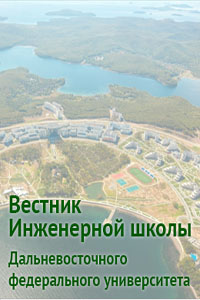Verification of temperature fields during friction stir welding
DOI:
https://doi.org/10.24866/2227-6858/2023-4/73-82Keywords:
friction stir welding, temperature fields, experiment, calculation, rotation speed, welding speed, working tool diameter, maximum temperature, asymmetry of isothermsAbstract
In the process of friction stir welding, the temperature fields in the joint zone determine the physical possibility of plastic flow of the heated material and obtaining a high-quality formation of the weld structure. In this paper, we set the task of comparing the calculated and experimental results of studying the temperature distribution in a plate made of AMg3 aluminum alloy around and under the tool.
Experimental studies were carried out on a laboratory bench, in which 8 thermocouples are fixed on a AMg3 aluminum alloy plate 4 mm thick, located along one line, located in a cross section relative to the direction of movement of a rotating tool. The tool for simulating the process of friction stir welding and heating of the working plate has a shoulder with a diameter of 22 mm.
To measure signals from thermocouples, an analog-to-digital converter "Termodat-22M5" is used. According to the temperature changes from different thermocouples over time for a given tool travel speed, the coordinates of the location of different isotherms and their geometry are determined.
Computational studies were carried out according to a mathematical model based on the scheme of a moving point source in the limiting state, while the tool is represented by a set of elementary heating sources uniformly distributed over its area.
The research results are presented in the form of calculated and experimental temperature fields of the plate at tool rotation speeds of 90 rad/s and welding speeds of 0,4 and 1,63 mm/s. The main result of the research is that the temperature of the material in the mixing zone is 500 0C according to the calculation, 510–520 °С according to the experiment. The highest temperature value is observed not in the mixing zone around the pin, but in the region of the trailing edge of the tool. In the experimental results, the asymmetry of the isotherms with respect to the welding line is significantly pronounced.
Downloads
Published
Issue
Section
License
Copyright (c) 2023 Far Eastern Federal Univercity: School of Engineering Bulletin

This work is licensed under a Creative Commons Attribution 4.0 International License.

